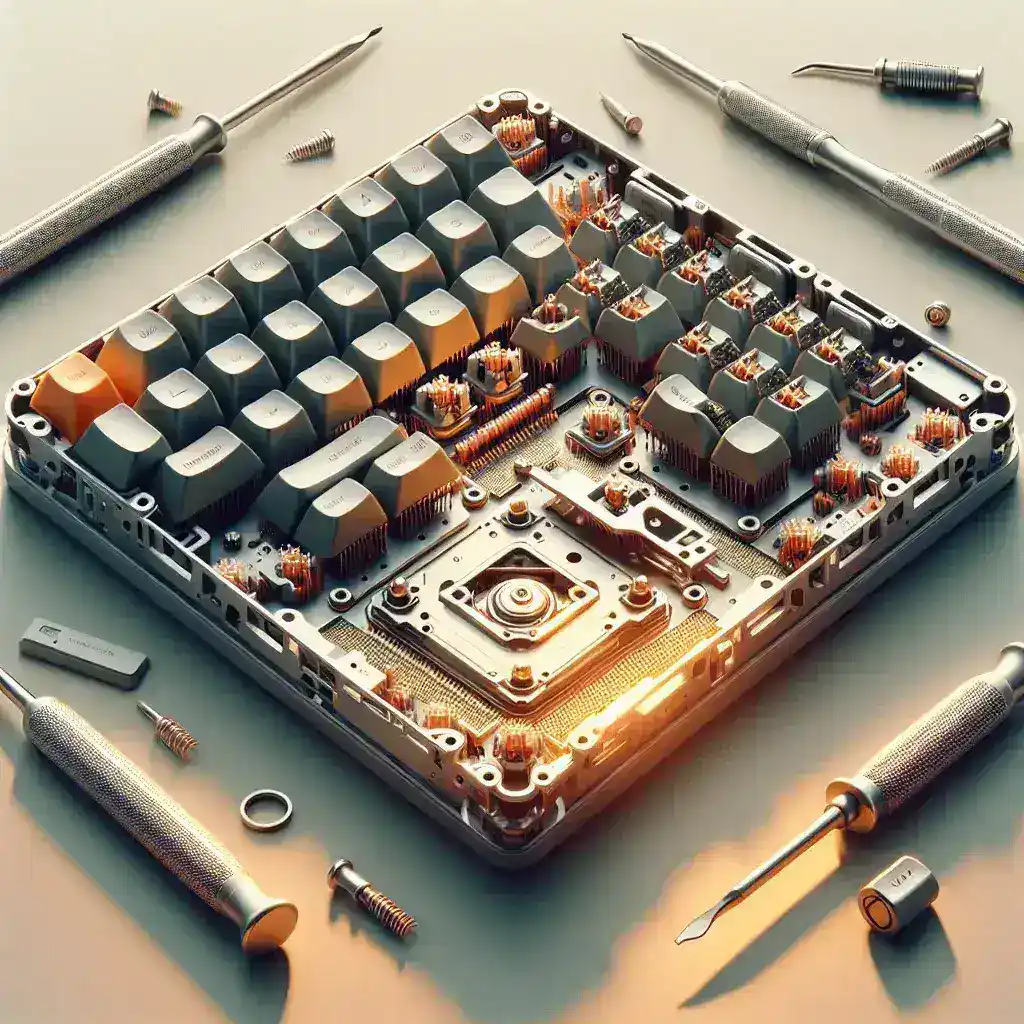Keyboards are an essential part of our daily computing experience. Whether you’re working on a project, gaming, or browsing the web, a functional keyboard is crucial. But what happens when your keyboard starts to act up? Don’t worry! This guide will take you through the steps to diagnose and fix common keyboard issues.
Common Keyboard Issues and Solutions
Before diving into the fixes, it’s important to identify the symptoms of a malfunctioning keyboard. Here are some common issues and their respective solutions:
| Issue | Possible Causes | Solutions |
|---|---|---|
| Unresponsive Keys | Dirt and debris, software glitches | Clean keys, update drivers, reboot system |
| Stuck Keys | Dirt and debris, physical damage | Clean keys, check for hardware issues |
| Incorrect Characters | Language settings, software glitches | Change keyboard settings, update drivers |
| Backlight Issues | Power settings, hardware issues | Check power settings, inspect hardware |
Unresponsive Keys
If your keyboard keys are unresponsive, it could be due to dirt and debris or software glitches. Here’s how to address them:
- Clean the Keys: Turn off your computer and unplug the keyboard. Use compressed air to blow out dirt and debris beneath the keys. For stubborn dirt, gently lift the keycaps and clean with isopropyl alcohol and a cotton swab.
- Update Drivers: Outdated or corrupted drivers can cause unresponsive keys. Go to the manufacturer’s website and download the latest drivers for your keyboard model.
- Reboot System: Sometimes, a simple reboot can resolve software glitches causing unresponsive keys.
Stuck Keys
Stuck keys can be particularly annoying. They can result from debris or physical damage to the keyboard. Here’s what you can do:
- Clean the Keys: Similar to unresponsive keys, turn off your system and clean the stuck keys with compressed air. If necessary, remove the keycaps for a more thorough cleaning.
- Inspect Hardware: Check to see if any keys are physically damaged. If a key is broken or the mechanism is damaged, you may need to replace the key or the entire keyboard.
Incorrect Characters
If your keyboard is typing incorrect characters, it could be due to incorrect language settings or software issues:
- Change Keyboard Settings: Ensure that your keyboard layout is set to your desired language. This can be changed in the settings menu of your operating system.
- Update Drivers: Similar to unresponsive keys, make sure your keyboard drivers are up to date.
Backlight Issues
A keyboard’s backlighting is not only stylish but also functional, especially in low-light environments. If your keyboard’s backlight isn’t working:
- Check Power Settings: Make sure your keyboard’s backlight settings are enabled. This can often be adjusted in your computer’s power settings or BIOS.
- Inspect Hardware: If the backlight still doesn’t work, there may be a hardware issue. In this case, you might need to consult the manufacturer for repair or replacement.
Preventive Measures
Preventing keyboard issues is better than fixing them. Here are some tips to keep your keyboard in top condition:
- Regular Cleaning: Regularly clean your keyboard to prevent dirt and debris buildup. Use a soft brush or compressed air to remove dust.
- Avoid Eating and Drinking: Food and liquids can cause significant damage to keyboards. Avoid consuming these near your keyboard.
- Use a Keyboard Cover: A silicone keyboard cover can protect against spills and dust.
- Proper Usage: Avoid pounding on your keys or using excessive force, as this can wear out the key mechanisms.
When to Seek Professional Help
If you’ve tried all the above solutions and your keyboard is still malfunctioning, it may be time to seek professional help. Consider contacting the manufacturer or taking your keyboard to a reputable repair shop for further diagnostics and repairs.
In conclusion, a malfunctioning keyboard doesn’t always mean a trip to the store for a new one. With some patience and the right tools, many common keyboard issues can be resolved at home.
